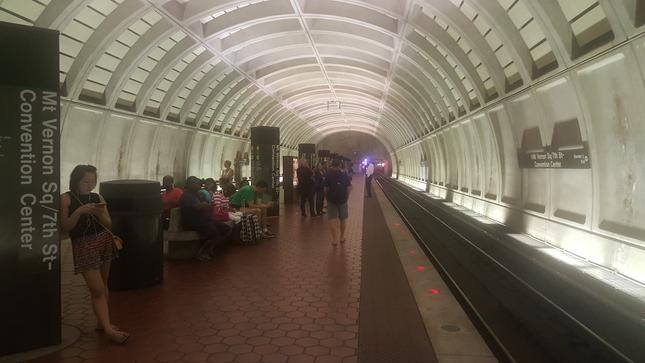“Stand back, doors closing.” There was a time when that was the most complicated announcement heard on D.C.’s Metrorail system. Now, in the summer of 2016, the Washington Metropolitan Area Transit Authority’s SafeTrack program of accelerated maintenance has brought not only long and detailed announcements, but exasperating service reductions to Metrorail.
SafeTrack Surge #5 has seen the return of continuous single-tracking to the Orange and Silver Lines, between the East Falls Church and Ballston stations. The reduced service will continue through July 31. WMATA implemented the “line segment shutdown” for the past three surges.
Surge #2 was in effect from June 18 to July 3 between Eastern Market and Benning Road; Surge #3 from July 5 to 11 between Reagan National Airport and Braddock Road; and Surge #4 from July 12 to 18 between Pentagon City and Reagan National Airport.
WMATA Assistant Director of Planning and Scheduling Julie Hershorn advises riders to visit wmata.com, use trip planners and find alternative routes. “Make sure you allow lots of extra time. It just won’t be as fast as normal whether you get on the Metrobus or whether you get on the Metrobus shuttle,” Hershorn said.
Over 100 people waited to board each 60-foot accordion-style shuttle bus during Surge #2. The shuttle bus ride adds an additional 30 minutes to a commute. Initially, Metro subsidized the train fare for passengers starting their trip between Largo Town Center and Capitol Heights.
The fare was calculated as if the trip started at the Eastern Market station. Metro riders were able to cross through the emergency-exit gates at Benning Road and Eastern Market.
The next day, Metro barricaded the gates and used several staffers to instruct confused passengers that they had to tap their SmarTrip card four times. Riders didn’t want to be charged twice for a one-way trip. Metro ultimately charged a regular single-trip fare to passengers enduring an irregular commuting experience.
“It’s insanely inconvenient. I’ve had to go out of my way to secure proper transportation and spend more money on Uber,” Katie Wood said.
Metro’s shift is impacting employees, families, businesses, politicians, tourists and interns, not only during the workweek, but on weekends too. Since May 28, the system has closed at midnight on Friday and Saturday, causing some to curtail nights out on the town in U Street, Dupont Circle and Chinatown.
On the first day of Surge #5, fire and smoke were reported under a Metro railcar at the East Falls Church station. Twitter user @AvaAtaee recorded video of the incident. “Just offloaded at East Falls Church. Visible flames under metro car and lots of smoke,” Ava tweeted.
Additionally, WMATA still faces challenges restoring air conditioning to several Metrorail stations and fixing railcars without AC. Passengers have expressed their frustrations with #hotcar on Twitter.
“6124 Orange line to New Carrollton is a sauna. At least 110 degrees and humid. Disgusting,” Eric Hobeck tweeted.
According to the WMATA website, “SafeTrack is an accelerated track work plan to address safety recommendations and rehabilitate the Metrorail system to improve safety and reliability.” This plan, with 15 surges involving station closures, single-tracking and shuttle buses, implements three years of track work into one year.
“I’m surprised by how much it has fallen apart since I’ve been here last,” returning visitor Terri Brink said.


